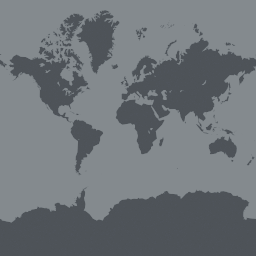The islands of Mauritius and Rodrigues are part of the Madagascar and Indian Ocean Islands Biodiversity Hotspot. With high level of plant endemism, the flora of the islands has been studied for over 250 years. Human activity has severely impacted biodiversity, the most well-known example being the extinction of the endemic dodo (Raphus cucullatus) in Mauritius. Now, the majority of native plants in both islands are threatened with extinction because of past deforestation and increasing levels of invasion by alien species.
This project focuses on the mobilization and imaging of existing data from The Mauritius Herbarium. This data will be useful in multiple ways, from support to native plant conservation to improve quality of food production, through organic agriculture, both essential to ensuring human well-being, healthy ecosystems and adaptation to climate change.
With the project organizer, Le Vélo Vert, initiating a pilot to mainstream organic agriculture, data sharing will demonstrate the value of cooperation, correct identification and suggest best non-crop species to help improve organic farming. The project is expected to bring together stakeholders of different fields to improve perspectives and multidisciplinarity, much needed to face the increasing problems of declining biodiversity and resources, and a growing human population.
Project Progress
To date, almost all 25,500 items of flowering plants of The Mauritius Herbarium (MAU) has been barcoded. The imaging of the MAU collection reached 14,300 images, which is an esitmated 55% of the flowering plants vouchers. Information on the origin and/or status of a given species of each island of the Mascarenes (Mauritius, Rodrigues and Réunion) has been added to the link species file in BRAHMS. Furthermore, based on specimens at MAU, a gazetteer list for Rodrigues was created.
The project compiled a list of 191 species from two surveys from 2017 on non-crop species found in and around organic fields. All taxa were added to BRAHMS. The 40 most common species of organic fields has been descriped, and photos of 25 of them were taken for a field guide that the project has been working on. The field guide will incorporate the combination of species used to help soil improvement and natural pest control.
A member of MAU participated in a BID Capacity Enhancement Workshop from the end of November to January 2018. The training was vital to ensure digital planning and process with data and metadata cleaned and formatted to DarwinCore standards. The same person followed another BID Capacit Enhancement Workshop in April 2018. The goal of the training was to master the skills of mapping, to learn the technical aspects of ecological niche and IUCN redlisting, and how to best maintain biodiversity information for decision making. This training were taken again online with new tools and more in-depth explanations from December 2018 to January 2019.
All flowering plant collections of the Mauritius Herbarium has been barcoded and taken photos of. This has resulted in 24,600 photos. MAU was the first GBIF data provider of Mauritius. A total of 5 datasets have been uploaded as a part of the project. Two of these datasets are checklist of the native species of Mauritius and Rodrigues. The species' accepted names of family and genera was completed in BRAHMS.
Based on specimens from MAU, a library of gazetteer was created to include synonyms. Estimated geographic locations has been added for most gazetteer using printed maps, scientific publications, notebook and Google Earth as the majority of specimens at MAU come from the "pre-GPS era". As mentioned, the checklist of species found in and around organic fields was compiled and published on the GBIF portal, as well as a relational database of the insects found in selected plant species was compiled and published.
5 species were added to the list of the 40 most common species in organic fields, so a list of the 45 most common species found in organic fields were chosen to feature in a field booklet. The booklet was published in print in December 2018 in short pocket format. Original photos were taken for each species. How to identify the species, their propagation, climatic envelope and uses, and insects that have been recorded on the plant species were compiled.
The Mauritius Herbarium organized three talks. The first talk was on GBIF and online data for the National Parks and Conservation Services staff in September 2018. The second talk was held the 26th December 2018, and the topic was the BID project for the Le Vélo Vert staff. On the 28th of December 2018, the third talk was held, and it was about GBIF and online data publishing for the two private collectors and a manager of a restoration/educational conservation site.


